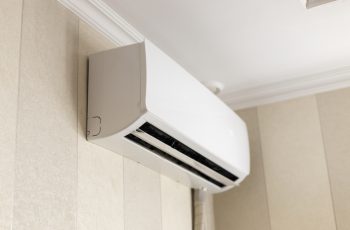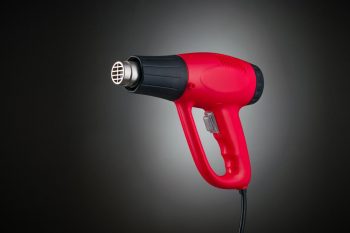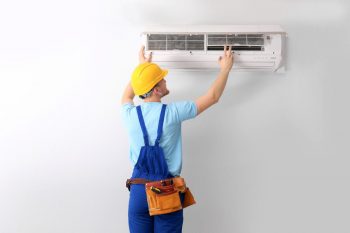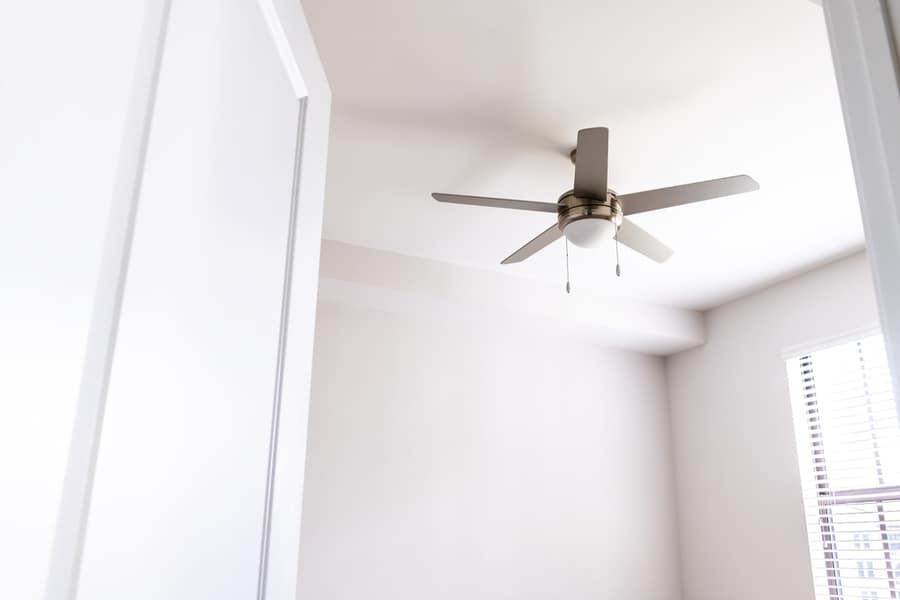
With a sudden hike in technology, everyone worldwide is now shifting to central heating and cooling systems and versatile air conditioning systems.
In this era, owning a ceiling fan is an old-fashioned thing.
However, a ceiling fan is the best option if you also aim to save energy and your energy bills. It keeps the rooms ventilated, cool, and comfy, especially in the moderate summer season; a ceiling fan feels like heaven.
A ceiling fan can reduce your home’s temperature by up to 4 degrees Fahrenheit.
The effect of airflow also makes you feel relaxed and comfortable. At the same time, you do not need to keep your place all locked up, fearing the leakage of cool air when owning a ceiling fan.
If you plan to buy a ceiling fan, you are already saving yourself a big amount that would otherwise be wasted on paying high electric bills. However, this guide will help you even further.
Instead of buying fans at their original price, you can reduce the cost of buying a ceiling fan by as much as 80%. How? Let’s find out!
Winter is the best time to buy a ceiling fan. The top 4 reasons that prove this are:
- Fans are available at low prices.
- You are prepared for the summer already.
- It is easy to book a skilled electrician.
- It keeps you warm in the winter as well.
Other factors that cause the prices of ceiling fans to vary include their material, the number of fan blades, their rating, and their downrod’s size.
This article will tell you about the best time of the year to buy a ceiling fan. You will also discover other ways to reduce the ceiling fan cost and save yourself some money.
What Time of the Year Do Ceiling Fans Go on Sale?
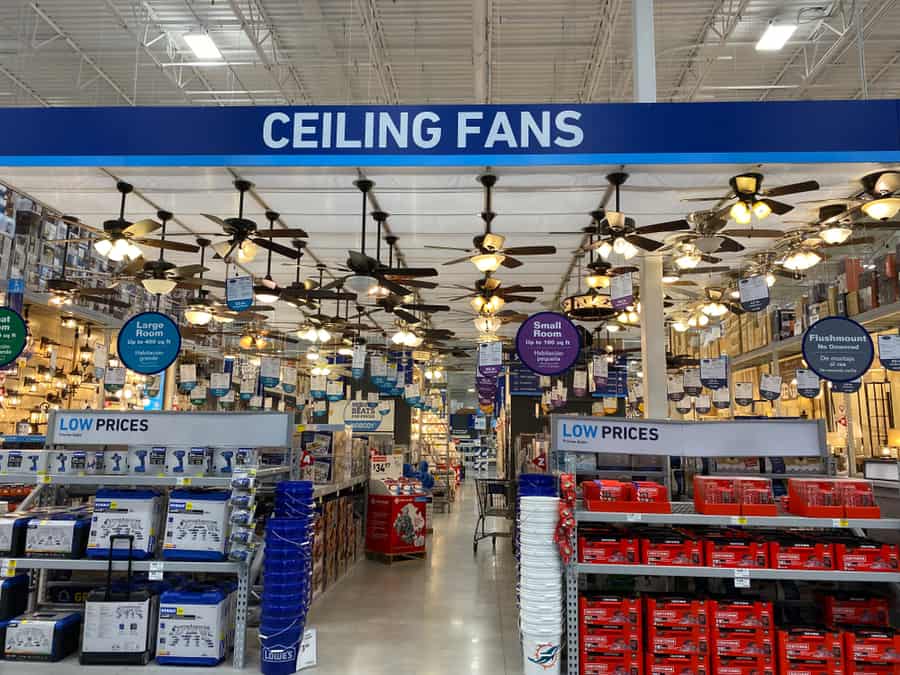
WINTERS!!!
Winters are the perfect time to buy a ceiling fan on a sale. You would be amazed to know how much the price of the ceiling fan can fall in winter.
All the companies offer amazing discounts and additional support if you buy from them in winter instead of the summer season.
The question is: When you do not use ceiling fans in the winter, why would you buy them off-season?
4 Reasons Why You Should Buy Ceiling Fans in the Winters
Winter season, especially December and January, is the best time to buy a ceiling fan at its lowest price.
While the summer season is the best time to turn on a fan, buying a fan might not be as favorable.
On the contrary, when it is winter, and you plan to make your home warm and cozy, it becomes the best time to buy a ceiling fan and store it for use next summer.
Here are the top 4 reasons that are enough to convince you to buy your ceiling fans in the winter:
1. Available at Low Prices

The survey shows the price of a fan can fall as much as 80% in the winter compared to summer.
In summer, the demand for ceiling fans also rises when the heat peaks. This huge hike in demand for fans causes the prices to go up. That’s why it is recommended not to buy a ceiling fan in May, June, and July.
What happens in winter is the opposite. As the demand falls, the manufacturers try to lower the prices to generate some sales. That is when the ceiling fan is available at the lowest price and is very budget friendly for you.
2. Already Prepared for the Summers

Are you waiting for hot scorching summer to arrive and make your life hell, or are you ready to deal with it already?
Instead of waiting for the peak summer season to get a ceiling fan, do the work immediately. You will be benefitted in both ways. You will be already prepared for the summer as well as you will get it for a lower price.
Take proactive action now and beat the heat early. Get the work done before hot summers force you to spend a huge price for the same results.
3. Easy To Book a Skilled Electrician

Whether it is an outdoor fan or an indoor ceiling fan, both must be done by a qualified electrician to stay safe.
In summer, the renowned electricians have a booked schedule in advance because of the high demand. This means even if you bought that high-priced fan in June, you might have to wait too long to get it fixed in July.
In winter, there is no such headache. The electrician is easily available and may offer a competitive price for the same work!
You must ensure your fan is bought and is available with all additional condiments before you book your service with the electrician.
4. Helps You Stay Warm

Who are we kidding? Nobody! Ceiling fans can help you stay warm in the summer season. How? Let us explain.
New ceiling fan models now have a forward and reverse mode, also called the summer or winter mode.
Forward Mode
It is the common mode for the summer season, also known as summer mode. In this mode, the fan throws the air downwards, leaving a cool breezy effect in the room.
Reverse Mode
In the reverse mode, also known as winter mode, the fan does the opposite work. It starts spinning in the opposite direction, helping to properly circulate warm air in the room.
As we all know, the hot air rises upwards, leaving the cool air below. When you turn on the heating unit in the winter, the warm air is filled in the top of the room, leaving the surface below cold.
To cope with that, the reverse mode comes to the rescue. It circulates the air all over the room without creating a breezy effect.
This equal distribution of hot air heats the room to all nooks and crannies, saving extra work for your heating unit.
Which Other Factors Affect the Price of a Ceiling Fan?
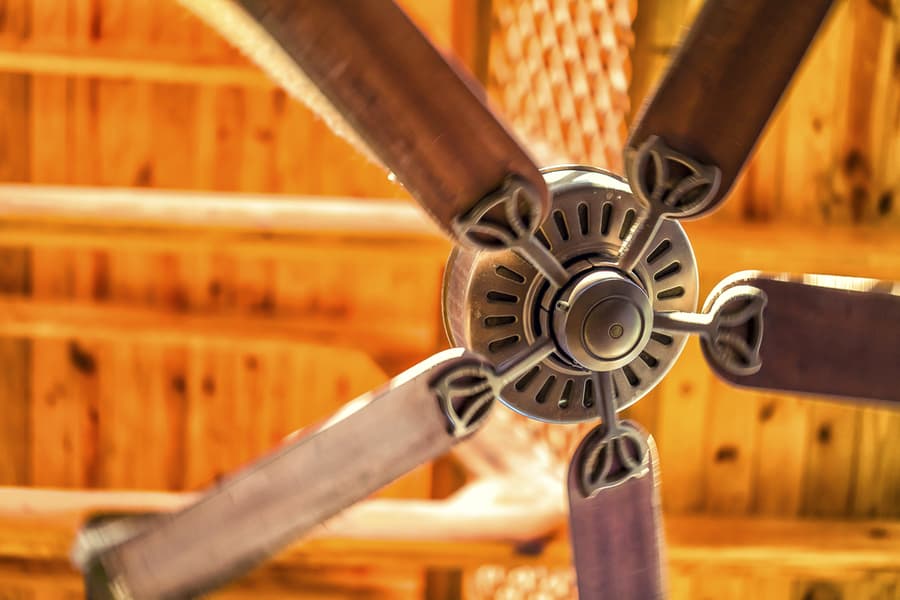
Several factors can affect how expensive or cheap a ceiling fan can cost. A few of these factors are mentioned here:
1. Material

The material your fan is made up of can greatly impact its cost and make its price vary. Below are given the common materials that ceiling fans are available in:
- Plastic – Plastic fans are the cheapest among all other material fans. Although they suit different environments very well, they come with a risk of fragility. Their strength can not be counted on.
- Aluminum – fans are slightly higher priced than plastic ones but provide better airflow and strength results.
- Steel – Steel is an even stronger metal and provides better results than an aluminum fan. It can work for a lifetime. However, it is a little overpriced compared to an aluminum fan.
- Wood – Sourcing and molding wood into sharp blades of a fan is difficult. The effort included in making a wooden fan makes it of premium quality. This makes wooden fans an element of luxury and the most expensive.
2. Number of Blades
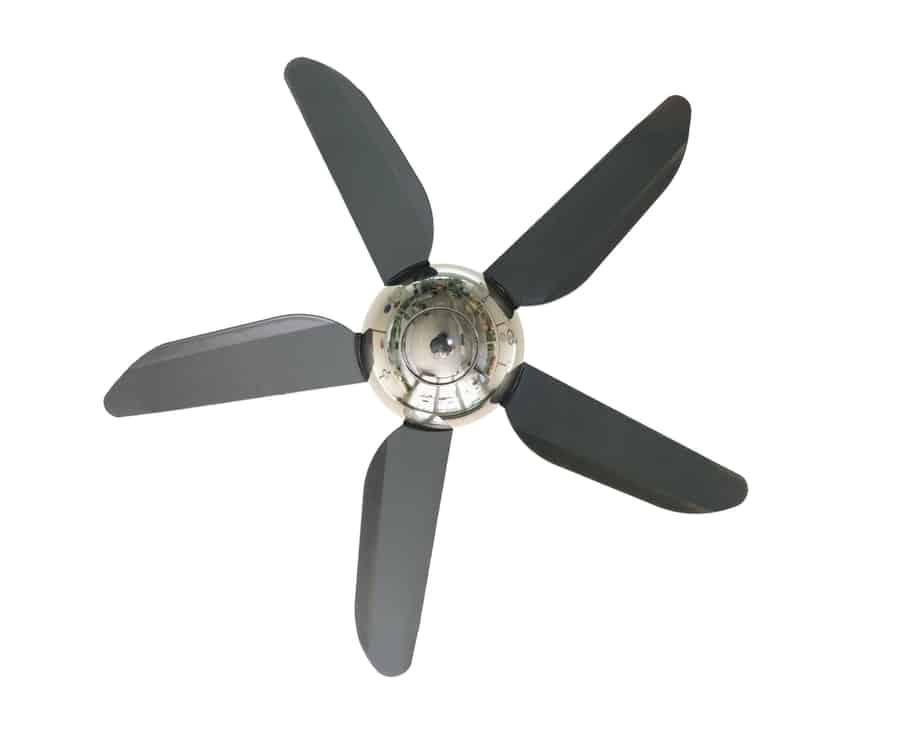
Ceiling fans are available in a range of 2 to 6 blades. Fans with more blades perform better by providing better air circulation.
This will produce higher air flow and make the room more comfortable. The more the number of blades of a fan, the higher its price is.
3. Rating
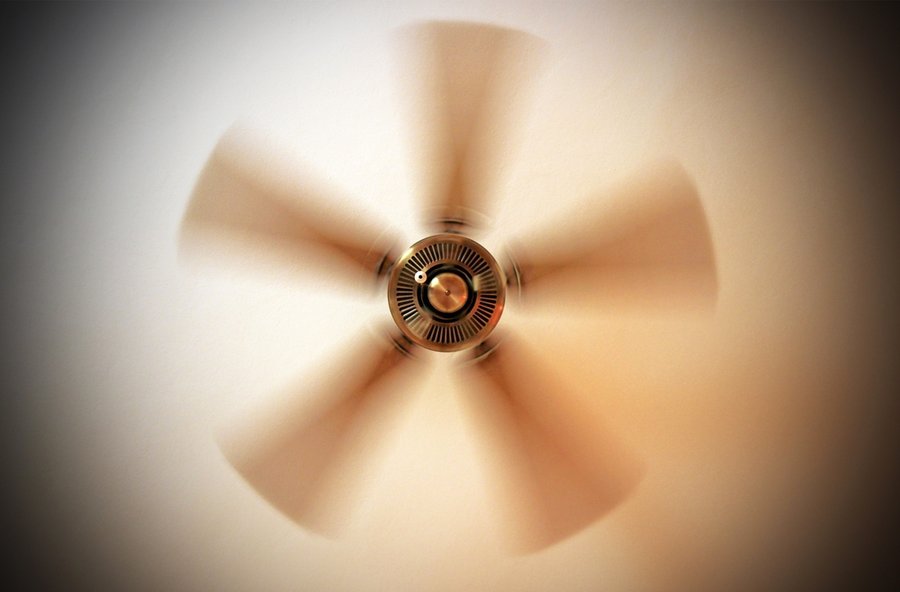
Depending on whether you are buying a fan for indoor use or outdoor use, you will have to consider its rating.
The rating concerns how resistant to moisture your ceiling fan is. This can be explained by dividing fans into three groups based on their installment.
- Dry-Rated Fans – These fans are for indoor use. This is installed in rooms or closed spaces where the fan has no encounter with moisture or water. These are a little low-priced as compared to the other two rated groups.
- Damp-Rated Fans – These fans are installed in garages, porches, or other areas with a risk of moisture or high humidity. These have no encounter with direct water but must work in a full of moisture space. These are a little pricey compared to dry-rated fans.
- Wet-Rated Fans – These fans are installed in spaces like decks or patios. Here, they must survive all weather conditions, such as rain storms. Therefore, they are built with special care and are expensive among all the above categories.
4. Size of Downrod

Downrod is the pipe that connects the fan’s motor to its spinning blades. These rods are available in sizes from 9 feet to 20 feet. The more the length, the higher the ceiling fan will cost.
Conclusion
The best time to buy a ceiling fan on sale is in winter.
In winter, ceiling fans are available cheaply, and the electrician is available for the installment service. In this way, you are prepared for the summer and don’t have to rush to get a ceiling fan in the hot summer.
If you buy a reverse-mode ceiling fan, it will also help you in keeping your house warm in the winter.
The factors that can vary the price of a ceiling fan include its material, number of blades, rating, and size of the fan’s download.
Frequently Asked Questions
What Tells Us About the Efficiency of a Ceiling Fan?
The airflow rating of a fan tells us how efficient the fan is. It describes the airflow of the ceiling fan per minute. The unit for measuring the airflow of a fan is cubic feet per minute (CFM).
The minimum efficiency of a fan should be 75 CFM. Higher values depict a higher efficiency of the fan hence a better working condition.
What Is the Cost To Run a Ceiling Fan?
The cost of running a ceiling fan can vary depending on its size and efficiency. The smaller the size, the lower the cost of energy bills. Likewise, the higher the efficiency, the lower the energy bills.
Even if it works day and night, a ceiling fan will cost you only a few pennies compared to the air conditioning system.
It is a budget-friendly option that can help you save your energy bills significantly.



